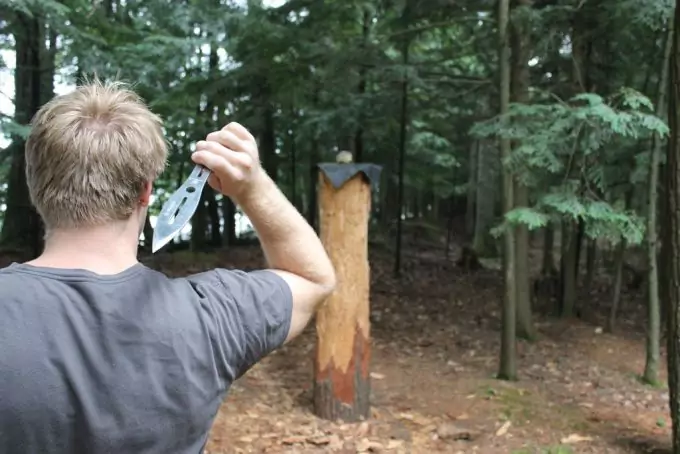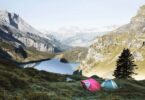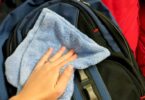In the wilderness, a knife is simply one of the basic tools a survivor must have, but handling the knife is something that’s not an easy thing. Sometimes you need it for cutting wood, and sometimes you need it for catching prey. That’s why every survivalist must know how to throw a throwing knife if they want maximum usage out of their basic tool.
A person that knows everything about throwing knives will always stick the point in the target. In the wild, when prey moves, the expert in throwing knives will easily calculate the distance and use of force to get catch what they hunt. All of this, however, will need lots of time, practice, and knowledge about knives.
We spent days of our lives practicing throwing knives – tried many different models and managed to learn different kinds of techniques of throwing. In this article we’ll try to teach you some of the things we know, we’ll explain how a knife should be thrown and what types of knives you should use for this occasion. Follow up and see what you need to know about successful knife throwing.
What You Need to Know Before the First Throw
Before you even take the knife in your hands, you need to know some basics about the knife throwing. First, there is a special way to hold the knife in your hand. A throwing knife is different than a kitchen knife or a machete, so it has a different type of holding with your fingers and hand.

Then, choosing the right target. Before you get out in nature and try to actually use the throwing knife, you need to practice, and the practice must be done in particular order. At the end is the throw itself – and the throw also has its own different ways that are more suitable for some, and not so much for others.
Holding the Knife
The person that is throwing the knife will hold it the way they feel it’s best for them. There is no strict rule – only a couple of preferences that will allow you to get a better grip and have a better throw overall.
- The hammer grip is when you hold the knife like you would any other tool, a hammer for example. This is the basic way to hold your knife, but other ways might be more suitable for you. Make sure your wrist is held very tight while you release the knife because if you don’t you’ll get uncontrolled rotations of it.
- The pinch grip is used for holding lightweight knives. Like the name suggests, the knife is held like it is pinched. You hold it with the index finger and the thumb and in a straight line with your arm so it looks like it is an extension of it. This grip allows you to make sudden, powerful throws from hand, without using the force of your whole body.
- The blade grip is when you hold the knife by the blade. Usually, throwing knives are only sharpened on the tip, but not on the blade. If this is the case, the blade grip is a great choice. If the blade is sharpened on one side, then make sure that the blade is faced out of your hand so you don’t cut yourself.
Choose a Good Target
If you’re a beginner, setting the right target is something you’ll need to learn and do. For beginners, it is best to find a target that is big enough, so you can be sure that you won’t miss it.

In the first few hours of throwing knives, you’ll need to focus on everything else but hitting the target, so you need something that is wide and big and you’ll be sure that you won’t miss it.
A large wooden board may be the best choice for this occasion, so if you can find one of these then you’ve done your part at the very beginning. If not, never mind, just find a big wooden something that your knife will stick into. It is also very important to place it in a field so there is nothing in the background, especially not humans or pets that you can hurt.
A wall behind the board is not the best option, a plain field is the best. Also, make sure the material you use as a target is not something that the knife will bounce off and ricochets. No metal boards, plastic surfaces or similar too – just good old wood. If you can find one, a simple rotting trunk is the best. Technology is no good here – keep it in line with nature.
How to Throw
If you have your target ready and you mastered holding the knife you’re about to use, then it’s time to learn a few knife throwing techniques.

The first thing you need to remember is that you don’t throw with your hand, but with your whole body. The flying of the knife when it leaves your hand is nothing more than the extended movement of your arms, legs, and body.
Some of the basic principles include synchronization of the arms and the legs. Right-handed people should always put the left leg front while throwing. Remember to keep the knees a little bent so that you gain more flexibility and ease the whole process.
- The arms should both be placed at the height of your chest and they should both be pointed forward at the target. When ready, the right arm should make the swing – take the arm back and place the knife as far as behind the head to get the best swing. Then swing sharply and strong toward the target like you want to chop off some large invisible trunk that is in front of you.
- It is very important to follow the knife all the way to end. That means you shouldn’t stop the motion of the body when you release the knife from your hand. Lean forward with your whole along with the throwing of the knife and let the body weight rest on the front, in this case, left foot. This way you’ll maintain precision and get less uncontrolled rotation which means you’ll be able to stick the knife in the target more easily.
This is, of course, the basic throwing method. There are other techniques of throwing a knife that will be mentioned below, but a person that wants to throw like a professional must know the basics.

There is no one rule when it comes to throwing knives – there is only a way that suits you the most, so follow up and find out what’s best for you.
What is a Good Throwing Knife
First things first – all knives are good throwing knives if you know how to handle them. However, a good throwing knife has its own features, but you don’t need to search to the end of the world for professional throwing knives so you can learn how to throw. All knives are good and you can learn with every single one of them.
But if we talk about what’s most used and best, then we have to mention some features that are essential. A good throwing knife is not razor sharp, but on contrary, it’s almost dull and just with a tip sharp enough to stick to the target. The razor should not be sharp so it doesn’t cut you while you throw it, or at least be made with only one blade.
Knife Dimensions
A throwing knife must be lightweight but up to a certain level. Professionals say that knives lighter than 3.5 ounces should not be used because they are too lightweight and you’ll lose accuracy with them. They will simply act like a tree leaf, being too lightweight, it goes as the wind blows – the knife will act similar, being too light it will be susceptible to the wind power.

The best throwing knives are in the range between 6 and 7 ounces – more will be too heavy and you’ll have trouble throwing the knife, and less, like we said, will lose accuracy. However, people that have stronger hands, arms and overall stamina can use heavier knives. Younger throwers and smaller by size people should stick to more lightweight options.
The best size for a throwing knife is between 7.8 and 9.8 inches if we’re talking about the ideal weight that is around 6.5 ounces.
Larger knives will also be heavier, and harder to use, and shorter will be lighter and uncontrollable. Also, if it is too small you’ll be able to use only one technique for throwing, which is not a tragedy but it will surely shorten your throwing experience.
Types of Throwing Knives
In the world of throwing knives, there are three main categories of knives that are used – the knife that is heavier on the blade, the knife with a heavier handle and the balanced one. The heavier blade and the heavier handle types don’t really differ one from the other – it’s more of a preference by their user.

The balanced knife, of course, is a combination of both and is most used by professionals. However, if you’re a beginner, we strongly recommend beginning with some of the other two types. With them, you’ll learn how to throw faster and you’ll achieve control over the flying knife easier.
No matter what type of the two you choose, remember that there is one basic rule when it comes to throwing. Always keep the heavier side on the other side of your finger – meaning hold the knife from the side that is lighter and throw the heavier side first.
This way you’ll have better control over the knife and you’ll avoid unwanted uncontrolled rotations which means you’ll stick the knife easier.
Distance from Target
The distance from the target is probably the most important thing you need to know to have the knife stick to the target. A different distance means a different need of spins of the knife, so you must know the rules. Usually, the closest you get to the target is 5 feet, and the furthest can be up to 70 feet.

Image credit: throwingknivesworld.com
A knife is not a weapon that can be used from a distance. No matter the use – hunting or sports – you can’t throw too far from the target. However, knife throwers usually know that if they stand about 10 feet from the target the knife must make one spin to stick in the target. If they stand 25 feet, the knife makes 3 spins. On 60 feet, the knife makes 8 spins etc.
But, these are general rules. They might not be useful for some knife throwers because all people are different. If you try some of the distance but the knife keeps bouncing off without sticking, then you’re probably supposed to make some changes in the throw itself and the distance from the target. Don’t make great changes, only half a feet forward or backward.
Techniques of Throwing a Knife
Professionals, but also beginners always use some of the throwing techniques that are most common, so if you feel ready to start the throwing knives adventure, step right up to this part and learn some of the techniques. Of course, after time, you’ll find what’s best for you, but until then it’s better to use some of these already known and used techniques.
No-Spin Throw
A throw without spin is usually only used by professionals because it’s the hardest. Physics make the knife spin around itself and that’s why most of the regular throws are done with more spins. For the no-spin throw, you’ll have to switch the body rules, legs, and arms, and you’ll have to be pretty close to the target, no more than 10 feet.

You keep the wrist of the throwing hand stiff and make a strong swing toward the target. In the moment of the letting go of the knife, there must not be any additional movement or looseness because the knife will lose the trajectory and won’t stick but rather just bounce off the target because it won’t end in it with the tip.
Half Spin Throw
This can be called “the beginners” throw because it is supposed to be the easiest way to make the knife from your hand to the target and get it stick. Remember to take the safety measures before you begin throwing so you don’t hurt yourself by accident. When you’re ready, you can begin throwing.
The most important thing is the distance and the choice of the knife. There are no strict rules, it all depends on the thrower and their preferences, but the most usual distance is about six feet which is pretty close to the target. It is like that because with the half spin it is enough to get the knife from your hand to the target and stick it.

You hold the knife by the blade and you throw without too much power. Just an easy throw to get the knife get to the target. With this distance, the knife will make one half of a spin and will perfectly stick in the wood. Don’t overthrow, everything is about concentration and practice to get the perfect strength and distance.
Full Spin Throw
When you have mastered the half spin throw technique it’s time to move on to the next level and make some more serious throws.
The full spin throw is when the knife makes a whole spin after it leaves your hand and gets to the target. The principle is basically the same as the half spin throw, it just differs on the distance and holding the knife.

You need to take safety measures too and you need to get a good target. Then, stand about 10.5 feet from the target as this is the perfect distance – of course, it differs from person to person so make some changes if you feel it is not right. You hold the knife the same and throw the same as the half spin.
Advanced Throwing
When you get hold of these techniques, you can move on to more advanced techniques. Every professional thrower has its own technique so don’t be afraid to experiment and find out what’s best for you. You can make additional steps, have a step in the side or throw the knife with more strength – it’s all up to you.
Safety Measures
Especially if you’re a beginner you need to take some safety measures before you make a throw. First, make sure there is nothing behind the target you’re throwing the knife at.
It’s best to be a plain field, no trees, no bushes, so you can see if something is moving. Also, make sure there is not even a wall or additional hard object from which the knife might ricochet.

Second, be sure that everyone around you is a grown person. Children are unpredictable and might get in the way or touch the knives and cut themselves.
Try to have pets, and other animals away too. If you have a dog tie it to a tree where it won’t be able to touch you or get near the target. Be careful not to hurt some wild animals if you’re in the wild too.
An important thing that you must take care of, especially if you’re a beginner is shoes. Always have hard shoes that won’t allow the knife to penetrate and hurt your feet. A common injury in knife throwing is cutting the feed and this happens when the thrower drop the knife while holding it in the hand.
Wrap Up
What needs to be mentioned in the end is that there is no general rule on how to perfectly throw a knife. It is okay to make changes from time to time to find the best technique that suits you the most. Also, find the best knife that is best for you. Some throwers prefer one kind and others a different kind of knives.

Give yourself some time before you master the throwing. Practice daily and find what’s best for you. When you’re sure you know everything about the basics, only then move on to more complex techniques.
Remember too, that knife throwing is not something that can be used a great weapon in nature. Survivalists shouldn’t rely on it unless they tend to hunt for pleasure and sport. If you like the art of knife throwing, use it only for fun and sport.







